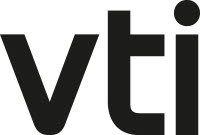No 2008:6: Marginal Cost Pricing of Noise in Railway Infrastructure
Henrik Andersson () and Mikael Ögren ()
Additional contact information
Henrik Andersson: VTI, Postal: Dept. of Transport Economics, P.O. Box 55685, SE-102 15 Stockholm, Sweden
Mikael Ögren: VTI, Postal: Dept. of Environment and Traffic Analysis, P.O. Box 8077, SE-402 78 Gothenburg, Sweden
Abstract: In order to mitigate negative effects from traffic it has been decided that infrastructure charges in the European Union (EU) should be based on short run marginal costs. The Swedish Parliament has legislated that operators in the Swedish railway infrastructure must pay charges based on short run marginal social costs in order to mitigate externalities in railway infrastructure. Internalization of the social cost of noise is of particular interest, since it is the only environmental problem perceived as more troublesome today than in the early 1990s.
Inclusion of a noise component in rail infrastructure charges raises two issues: (i) the monetary evaluation of noise abatement, since noise is a non-market good, and (ii) the estimation of the effect on the noise level that one extra train will create. Regarding the latter, we are interested in the marginal noise, since infrastructure charges based on the short-run marginal cost principle should be based on the effect from the marginal train, not the noise level itself.
Using already existing knowledge, this study shows that it is possible to implement a noise component in the rail infrastructure charges. The values that are used today to estimate the social cost of noise exposure in cost benefit analysis can also be used to calculate the marginal cost. We recommend, however, that further research be carried out in order to get more robust estimates based on railway traffic. We also show that the existing noise estimation models can easily be modified to estimate the marginal noise. Noise infrastructure charges give the operators incentives to reduce their noise emissions. We believe that this kind of charge can be used to reduce overall emission levels to an optimal social level, but that it is important for the charge to be based on monetary estimates for rail-traffic and not road-traffic.
Keywords: Externalities; Marginal Cost; Noise; Railway
23 pages, July 1, 2008
Full text files
Andersson_Ogren_railnoise.pdf
- Swedish National Road & Transport Research Institute (VTI)
- See also CTS Working papers in Transport Economics
- Ordering Working Papers
- Home page for this series
Questions (including download problems) about the papers in this series should be directed to Biblioteket vid VTI ()
Report other problems with accessing this service to Sune Karlsson ().
RePEc:hhs:vtiwps:2008_006This page generated on 2024-09-13 22:17:40.

